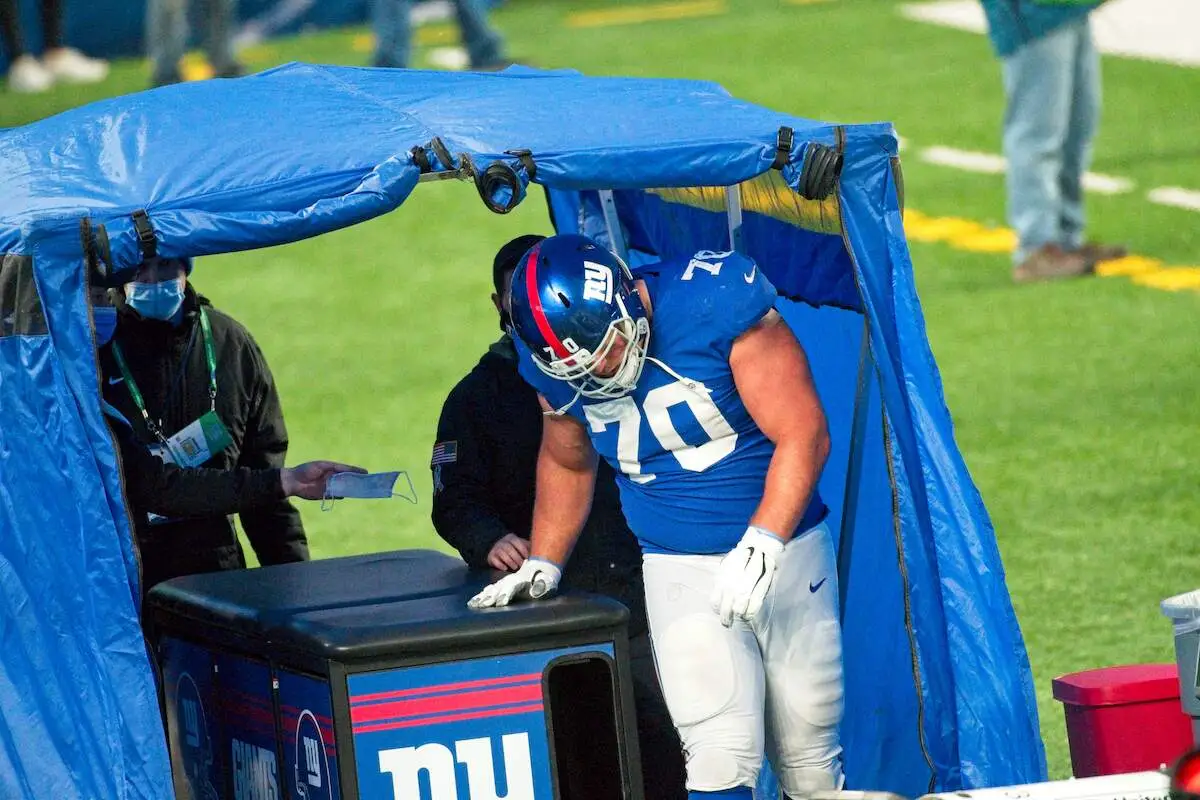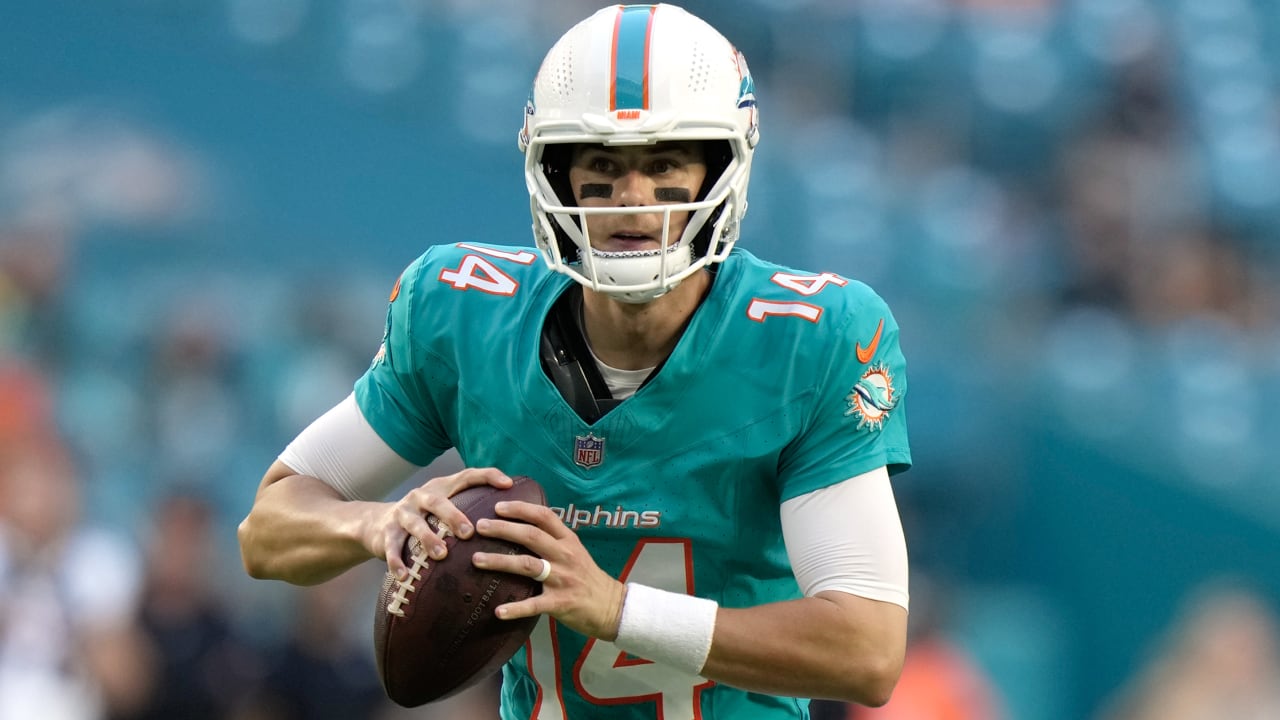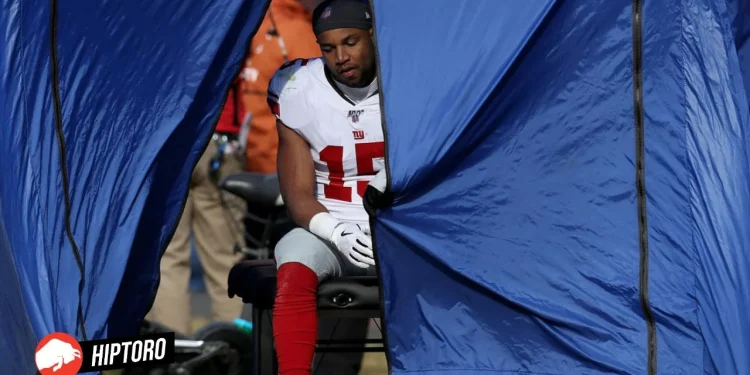In the high-impact world of the NFL, player injuries are an unfortunate but inevitable part of the game. As fans cheer on from the stands or the comfort of their homes, a critical component of player safety and injury management sits inconspicuously along the sidelines: the blue tent. This article delves into the purpose, history, and inner workings of the NFL’s blue tent, shedding light on its vital role in protecting the league’s athletes.

The Genesis of the NFL’s Blue Tent
The introduction of the blue tent in the 2017 NFL season marked a significant shift in how player injuries, particularly concussions, are diagnosed and managed on the field. Designed to offer a private and tranquil setting away from the roaring crowds and the intense atmosphere of the gridiron, the blue tent is a testament to the NFL’s commitment to player safety.
The tent’s primary function is to provide a secluded space for doctors and medical staff to conduct comprehensive evaluations of injured players. It’s spacious enough to accommodate a training table, the player, and the necessary medical personnel, ensuring that injuries can be assessed with the utmost care and precision.
A Pioneer in Player Safety
The first player to experience the benefits of the blue tent was New England Patriots linebacker Dont’a Hightower. Following an on-field incident during the 2017 season opener where two Kansas City Chiefs players collided with his knee, Hightower was promptly escorted to the tent for evaluation. This incident underscored the tent’s importance in providing immediate and effective medical attention.
Sources: UCLA is set to hire DeShaun Foster as the school’s next head coach. He’s is in the UCLA Hall of Fame as a player, worked as an assistant coach there since 2017 and played seven seasons in the NFL. pic.twitter.com/MiGPayT4Jj
— Pete Thamel (@PeteThamel) February 12, 2024
In the weeks that followed, numerous players, including notable names like Cliff Avril and Rob Gronkowski, would also find themselves under the blue canopy. Despite the reluctance any player might feel about being sidelined, the presence of the tent on the NFL sidelines offers a crucial safety net, ensuring players receive the necessary care post-injury.
Behind the Curtain: Inside the NFL Blue Tent
The blue tent may seem enigmatic to the public eye, with its operations largely shrouded in secrecy to preserve player privacy. According to Dr. Allen Sills, the NFL’s chief medical officer, the tent is surprisingly spacious and equipped with a video booth. This technology enables video technicians and medical specialists to meticulously review footage, identifying and assessing injuries that may have gone unnoticed during gameplay.
This level of technology and privacy has been instrumental in enhancing the NFL’s injury protocol, allowing for a swift and accurate diagnosis that is critical in the fast-paced environment of professional football. Despite the lack of publicly released footage from within the tent, its success in providing a secure and private setting for injury assessment is undeniable.

Conclusion: A Testament to Player Safety
The blue tent represents a significant advancement in the NFL’s ongoing efforts to improve player safety. By providing a space where injuries can be promptly and privately assessed, the league underscores its commitment to the well-being of its athletes. As the NFL continues to evolve, the blue tent remains a symbol of the careful balance between the sport’s inherent risks and the paramount importance of player health and safety.
In an era where sports injuries are under increasing scrutiny, the NFL’s blue tent serves as a beacon of progress, demonstrating that the league is taking tangible steps to protect its players. As fans, while we may not see the inner workings of the blue tent, its presence on the sidelines is a reassuring reminder of the NFL’s dedication to ensuring the health and safety of its stars.










